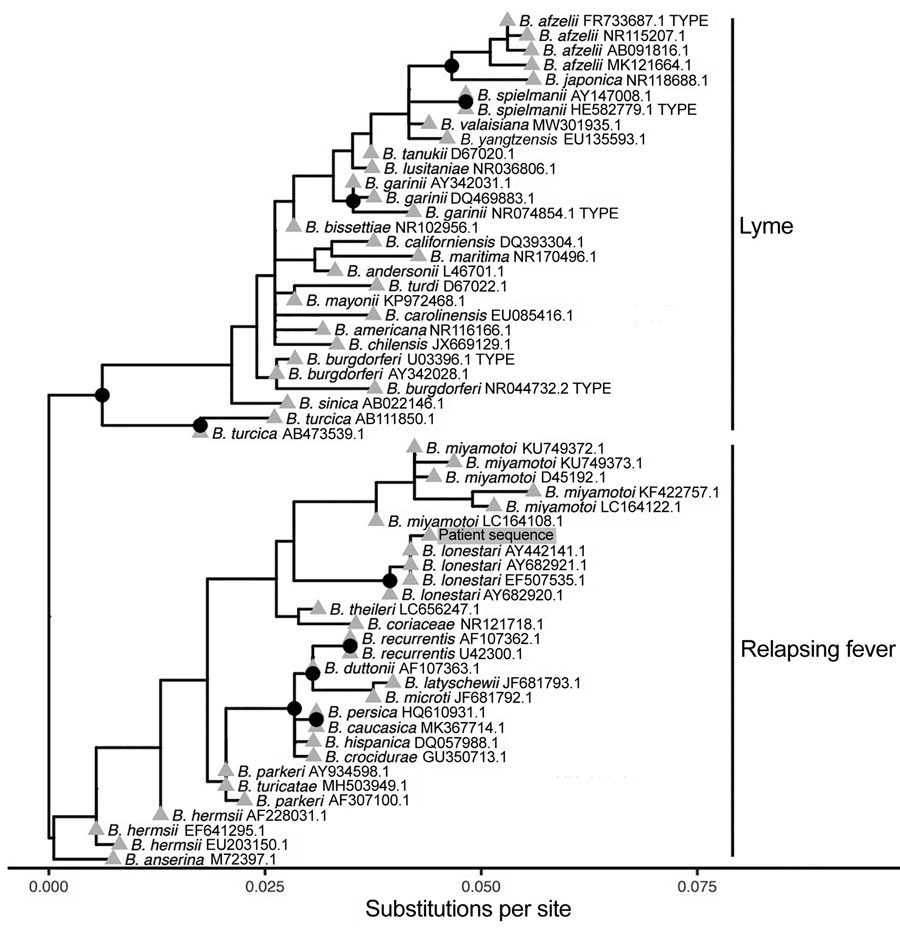Volume 29, Number 2—February 2023
Research Letter
Relapsing Fever Caused by Borrelia lonestari after Tick Bite in Alabama, USA
Figure

Figure. Phylogenetic analysis of bacterial sequence derived from patient’s blood (gray shading) in study of relapsing fever caused by Borrelia lonestari after tick bite in Alabama, USA. Phylogenetic tree was constructed from representative V1/V2 regions of 16S rRNA gene sequences from different Borrelia spp. known to cause Lyme disease or relapsing fever. GenBank accession numbers are indicated after the species names. The bacterial sequence from the patient sample formed a high-confidence clade with B. lonestari sequences and was most closely related to B. miyamotoi. Nodes with >95% confidence bootstrap values are labeled with black circles, and branch tips are labeled with gray triangles.
1Current affiliation: Barcelona Institute for Global Health, Barcelona, Spain.